01 Starting Point
02 Secondary Research
︎Psychological Foundations
︎Market Gap Analysis
︎Market Gap Analysis
I delved deeper into the current digital application market to assess if the segment focused on aiding anxiety management is oversaturated, considering its widespread popularity.
︎ User Segmentation
I initially categorized current users into two groups based on their motivations for using the applications and their behavioral patterns: rational users and exploratory users.After cross-referencing user motivations and behavior patterns with their ages, it becomes evident that these categories align significantly with specific age groups.
It became evident to me that the accessibility of different age groups to relevant resources and the experiences gained with age are crucial in explaining their behavioral patterns and shaping their needs. Adults, who have greater control over their lives and sufficient knowledge to seek various forms of help or develop their own coping mechanisms, contrast with younger age groups. These younger individuals, still acquainting themselves with the world, have limited access to resources and may depend more on the sources available to them.
Furthermore, the current user base of these applications primarily consists of adolescents and mature adults, with the apps seemingly targeting these demographics. However, this raises a question: what about younger age groups who also experience negative emotions and face greater challenges in becoming aware of their feelings, managing their emotions, and seeking external help? Are their needs being adequately addressed?
Therefore, to conduct a more detailed analysis, I decided to focus on three distinct age groups. This approach allows for a deeper understanding of how each group interacts with the applications, highlighting potential gaps in addressing the emotional needs of younger users.
︎ Competitors’ Benchmark
Comparing user values with those of popular mood management applications, it's evident that despite their varied forms and distinctive features, the current market largely overlooks the needs of children. Additionally, very few products focus on developing a lasting, healthy mindset for coping with negative emotions. Instead, most opt for immediate solutions to alleviate current feelings or address immediate challenges.
The analysis reveals a notable gap in the market for children's products. Due to security concerns, social or community-based online applications are not suitable for young users.
While the Worry Doll app appears to address a similar need, its simplicity relegates it to being more of a basic goal-setter or problem-list tool, rather than a comprehensive emotion management application. Moreover, its fundamental features cater to a general audience, lacking the specialized design and functionality specifically tailored to children's emotional needs. This leaves a void for a self-revealing product specifically tailored to children.
Such a product aligns with my initial objective: to foster a long-term cultivation of children's mental frameworks.
03 Primary Research ︎Preparation
![]()
03 Primary Research ︎Preparation
03 Primary Research︎Preparation
︎Objectives
︎Research Result
︎ Shapes and Colors
![]()
Based on the observations mentioned, it can be further concluded that emotions are overall perceived intuitively and simply. Happiness and sadness are the most directly perceived emotions, mentioned and straightforwardly represented by smiling and crying. This suggests that the understanding of emotions in this age group is relatively simplistic.
︎About Negative Feelings
The primary sources of negative emotions can be categorized into three distinct areas: extracurricular activities, academic performance, and environmental factors.
Both extracurricular and academic stresses are linked to performance and peer comparison, which can create a persistent sense of competition. These pressures are often immediate and tangible, requiring active strategies for children to manage. In contrast, environmental fears are often based on a child's perception and may lessen with age and increased knowledge, suggesting that education and exposure to different environments can play a significant role in alleviating these fears. However, without developing proper coping strategies for the stresses associated with performance and comparison, children may struggle to adapt to similar stressors in adulthood.
How do they manage these negative feelings? It became evident that this was a challenging question for many of them, as some could not provide clear answers and simply expressed that they just let the emotions pass on their own. However, after engaging them in some hypothetical scenarios and encouraging discussions, more responses emerged.
While they possess basic knowledge of coping with emotions, all these methods only provide temporary relief. They have yet to develop a comprehensive approach to fully confront emotions, identify their roots, and then properly manage these emotions and their stressors.
︎ Buy a FeatureI opted for the “buy a feature” research method, taking into account the limited expressive capabilities of this age group. This approach aims to facilitate more intuitive participation, enhancing both efficiency and the potential depth of the results.
Initially, I conceptualized 12 potential product ideas, which were then refined into the 8 possibilities listed below. These products vary in their focus: some are designed to foster family interaction, while others serve as personal tools for children to independently manage their emotions and tasks.
For this study, 6 children participated, each provided with a hypothetical budget of $1000 to allocate towards purchasing these features.
Compared to products meant for family communication or those placed in common family spaces, children showed a preference for private, personal products. They favored items that were fun, interesting, and cute. For instance, the emotion thermometer, which is quite similar to the emotion board or mood diary, received more votes because it appeared more entertaining.
This preference indicates that children value a sense of personal ownership and control over their emotional expression tools. The appeal of fun and visually appealing items like the emotion thermometer suggests that engaging design plays a crucial role in attracting children's interest and participation. This preference for personal over communal emotional tools might also reflect a growing desire for individual expression and understanding of emotions at a personal level.
04 Ideation
︎User Journey Maps
︎User Journey Maps
It's important to recognize that the scenarios outlined below are idealized. In reality, there's a significant possibility that children may not be fully aware of their own emotions. Additionally, parents might overlook subtle changes in their child's emotional state due to the rapid fluctuations of children's moods or a lack of emphasis on their importance. In either case, consistently paying attention to and engaging in discussions about children's mental health is crucial.
︎Brainstorming
![]()
Considering the age of the target group, the needs and roles of guardians and the entire family cannot be overlooked.
After careful consideration of both children's and parents' needs and their dynamic interaction, I have decided on a combination of physical products and digital applications as the final product format, all centered around the theme of "Emotion Monsters." Additionally, the digital products will include a tablet version tailored for children and a mobile version for parents, each featuring completely distinct content.
The initial concepts for the physical products were complex and somewhat disjointed. These products evolved directly from the outcomes of the "Buy A Feature" exercise. However, my aim is to streamline the design, making it more cohesive and minimalist, rather than cluttered with numerous functions and lacking a clear primary focus.
︎Brainstorming
![]()
Considering the age of the target group, the needs and roles of guardians and the entire family cannot be overlooked.
After careful consideration of both children's and parents' needs and their dynamic interaction, I have decided on a combination of physical products and digital applications as the final product format, all centered around the theme of "Emotion Monsters." Additionally, the digital products will include a tablet version tailored for children and a mobile version for parents, each featuring completely distinct content.
The initial concepts for the physical products were complex and somewhat disjointed. These products evolved directly from the outcomes of the "Buy A Feature" exercise. However, my aim is to streamline the design, making it more cohesive and minimalist, rather than cluttered with numerous functions and lacking a clear primary focus.

Considering the age of the target group, the needs and roles of guardians and the entire family cannot be overlooked.
After careful consideration of both children's and parents' needs and their dynamic interaction, I have decided on a combination of physical products and digital applications as the final product format, all centered around the theme of "Emotion Monsters." Additionally, the digital products will include a tablet version tailored for children and a mobile version for parents, each featuring completely distinct content.
The initial concepts for the physical products were complex and somewhat disjointed. These products evolved directly from the outcomes of the "Buy A Feature" exercise. However, my aim is to streamline the design, making it more cohesive and minimalist, rather than cluttered with numerous functions and lacking a clear primary focus.

Consequently, the end product has evolved into a combination of physical huggy monster toys paired with complementary digital applications.
05 Solution
︎User Flow
︎Sitemap
︎Design
︎ Sketches




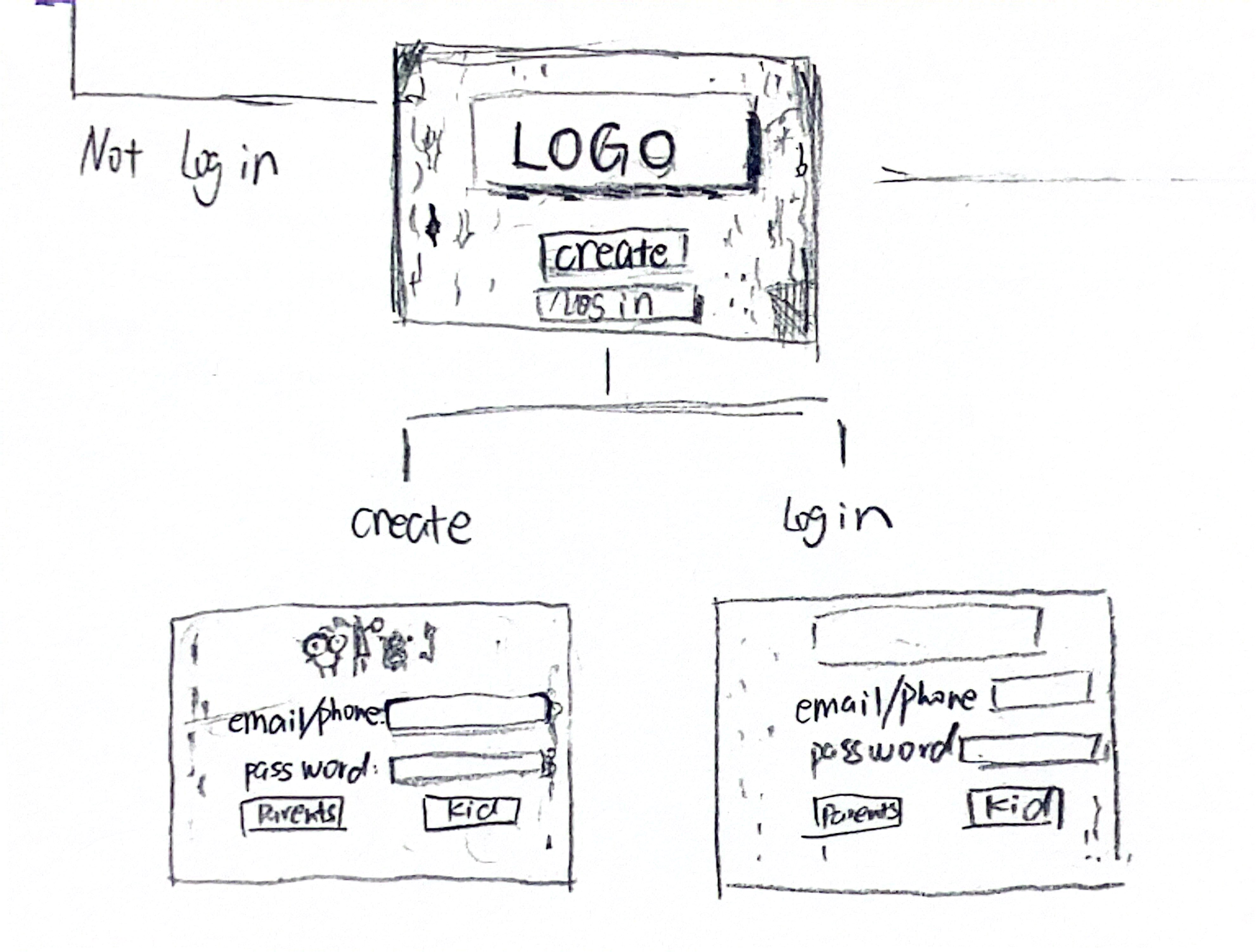
︎ Wireframe
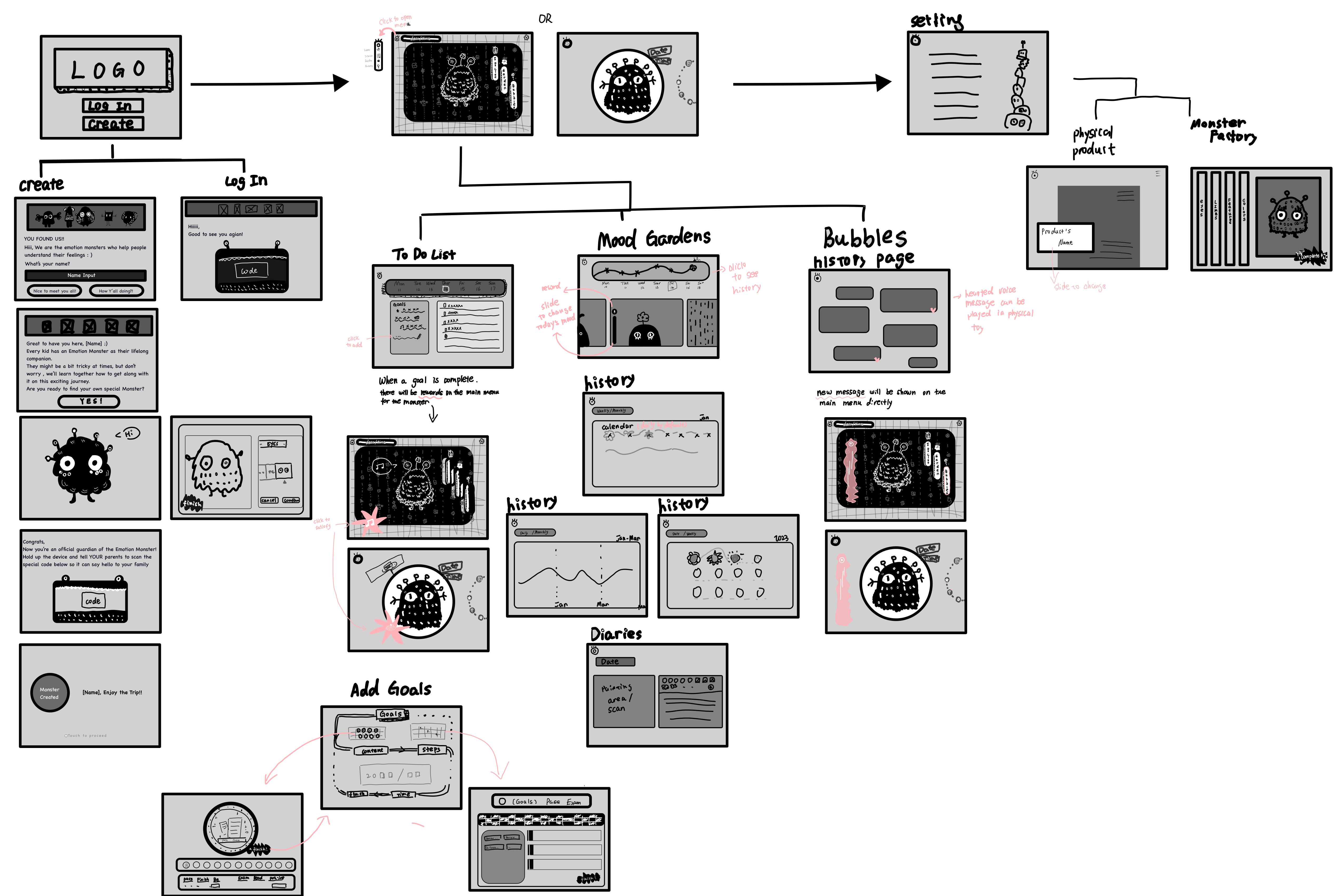
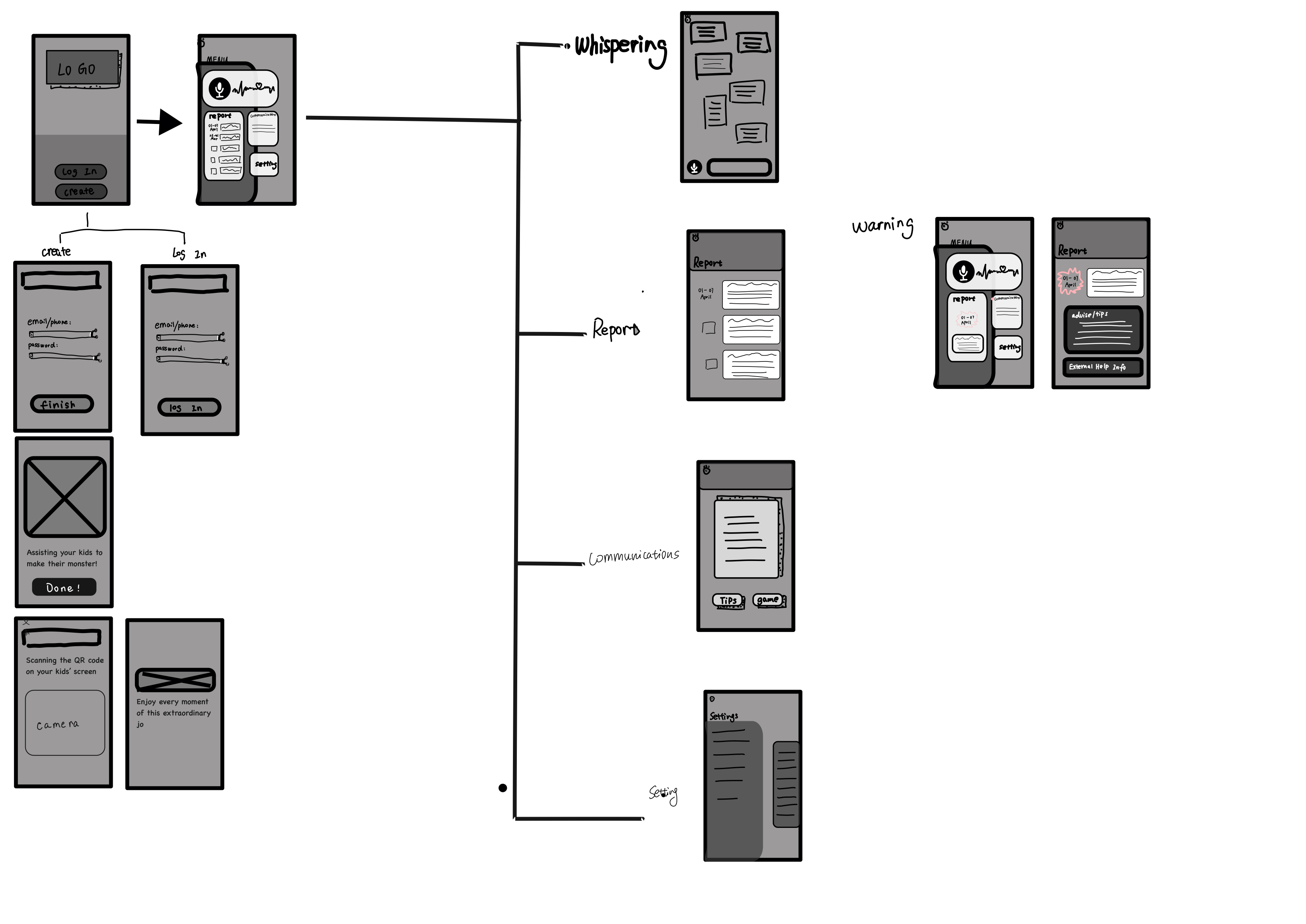
︎ Moodboard & Color Exploration
︎ Design Guidelines
︎ Interface Iterations




To ensure that the overall design aligns closely with children's usage habits and to foster a positive and joyful mood each time they open the app, I meticulously crafted multiple versions of many details. These were then repeatedly tested and refined to retain only the best iterations.
︎Key Features
︎ Main Page

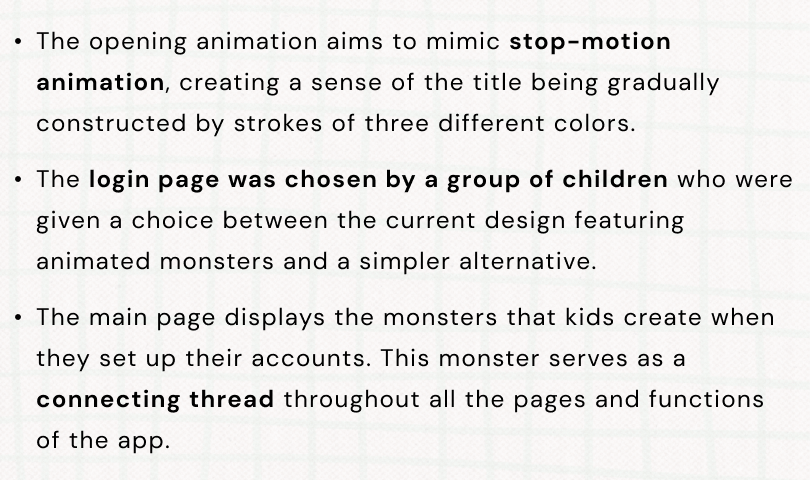
︎ To Do List
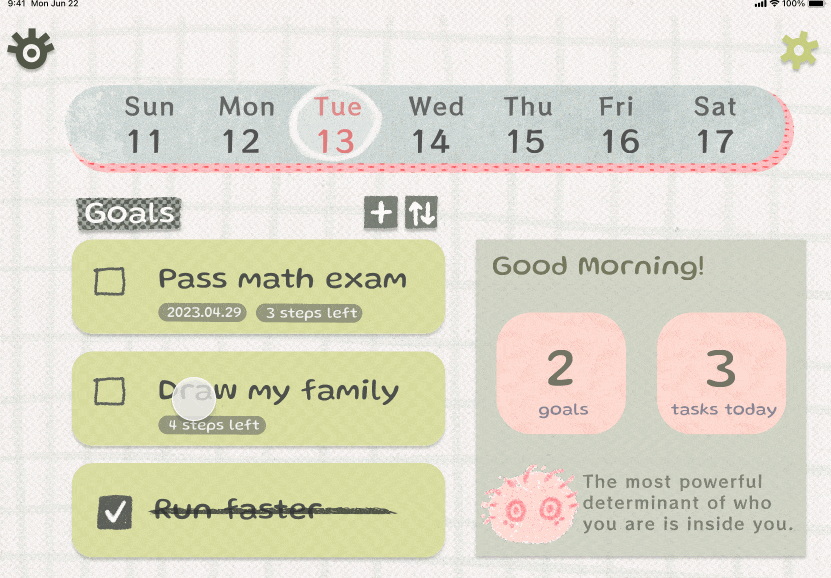
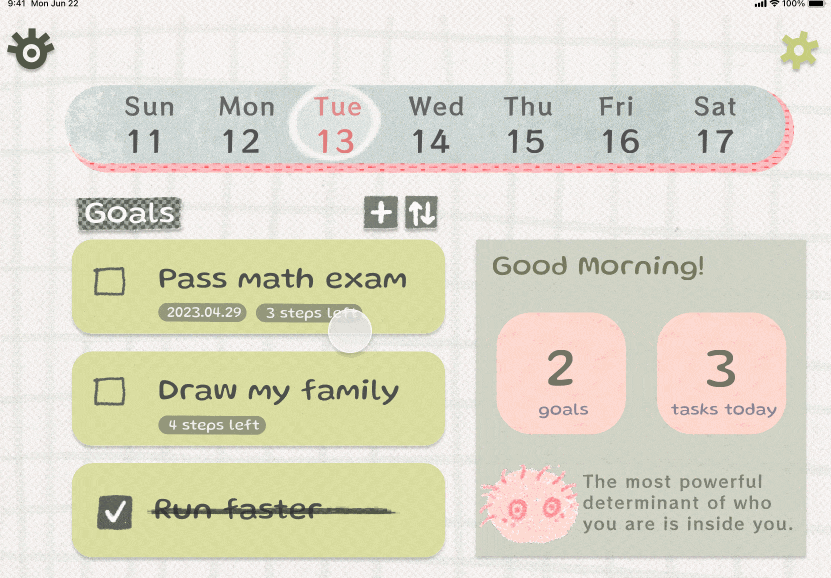

︎ Emotion Gardens

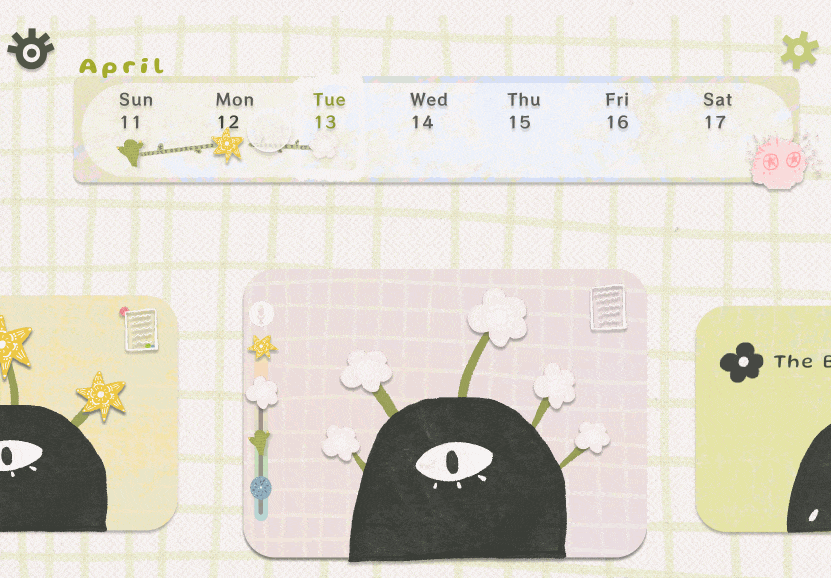

︎ Whispering Bubbles
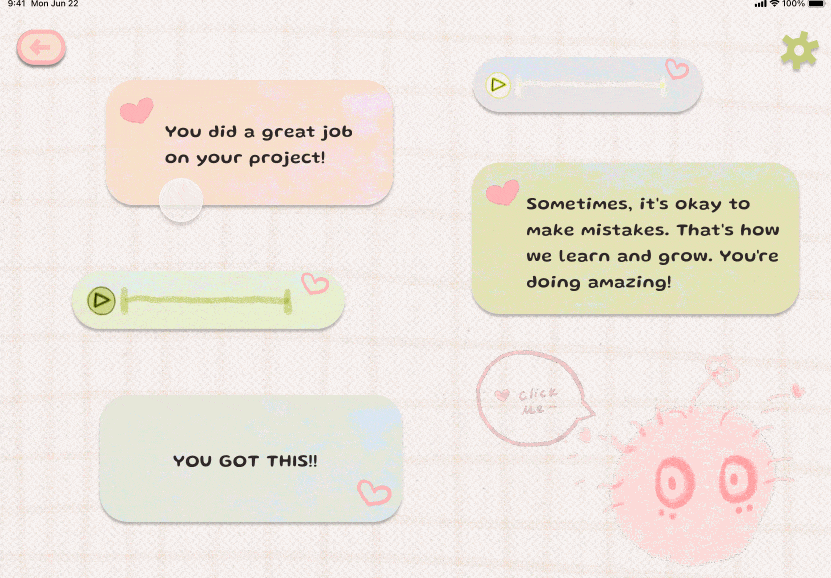


︎ Wireframe Demo
Below, you'll find a demonstration of my project created in Figma.
Kindly note that the loading may require a brief moment, and there might be a slight delay/lag in the animation due to loading factors. Have fun with it ︎
︎Prototype




06 Business Model
︎Market Trend
In the Zuora SEI March 2023 report, 17% Compound Annual Growth Rate (CAGR), significantly outpacing the S&P 500's 4.6% over the same period. Despite macroeconomic challenges, these SEI companies maintained robust growth, recording a 12% revenue increase in 2022, surpassing the S&P 500's 10.6%. In terms of Average Revenue Per Account (ARPA) and Subscriber acquisition, both metrics exhibited fluctuations over 16 quarters, yet the overall trendlines indicate a consistent growth pattern, highlighting the ongoing expansion and resilience of the subscription economy.
The significance of customer retention strategies is further underscored by findings in Stripe's "The State of Subscription and Billing Management" report. This report reaffirms the necessity of having a flexible monetization model and employing promotional pricing as critical tactics. These approaches are vital for optimizing pricing, maintaining, and expanding customer bases, especially in the face of economic uncertainties.
︎Software as a Service (SaaS)
The fundamental distinction between subscription models and freemium/one-time purchase (OTP) models is rooted in their revenue structures: subscriptions are pay-per-service, while freemium/OTP is pay-per-product. The subscription model inherently promotes a dynamic and continuous engagement with consumers.
Financially, it provides a steady stream of revenue through ongoing service provision, contingent on the renewal of subscriptions by customers. Further, it also plays a key role in adapting to changing market dynamics, thereby ensuring the continued growth and stability of subscription-based businesses.
This model's emphasis on sustained interaction underscores the critical role of customer satisfaction as a central pillar of customer loyalty.
In delivering exceptional service, key strategies include:
- Managing Incentives: Many companies enhance customer loyalty by offering rewards and incentives that encourage continuous engagement and subscription renewals.
- Managing Expectations: It's crucial to set realistic expectations with customers and then strive to exceed them. This approach builds trust and enhances customer satisfaction.
- Managing Information: Effective use of surveys, complaint and suggestion systems, sentiment analysis, and mystery shopping can provide valuable insights into customer needs and perceptions, guiding improvements in service and product offerings.
- Managing Crisis: Successfully navigating and resolving crises can turn potential negatives into opportunities for demonstrating commitment to customer satisfaction. Timely and effective crisis management can enhance brand perception and loyalty.
︎A Hybrid of Subscription and Freemium
The monetization models for similar products can generally be divided into two categories: one is a subscription model that unlocks a paywall to access essential additional functions, and the other is a one-time purchase model to unlock elements like themes, avatars, etc.
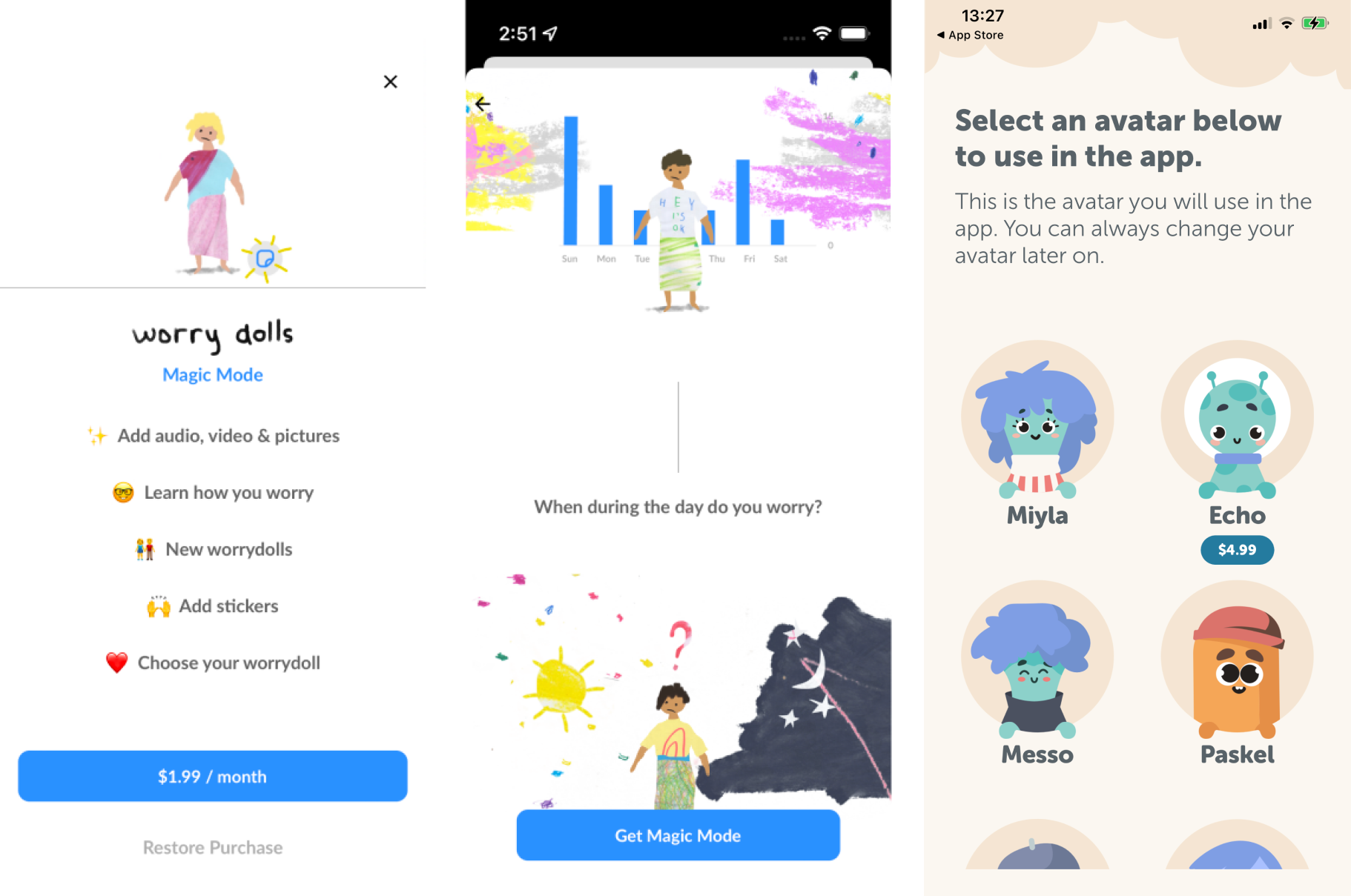
Fuzzy Huggy, however, will adopt a hybrid of a subscription model and a freemium model, and distinguishes itself by offering more tiered options compared to its competitors. This strategy benefits both the users and the company. For users, it provides greater flexibility and choice, allowing them to select a subscription level that best fits their needs and budget. For the company, this approach not only caters to a wider range of consumer preferences but also has the potential to increase customer satisfaction and loyalty, thereby enhancing revenue opportunities and market positioning.
07 Refelection
![]()
07 Refelection![]()
08 Credits
08 Credits
























 The significance of customer retention strategies is further underscored by findings in Stripe's "
The significance of customer retention strategies is further underscored by findings in Stripe's "


